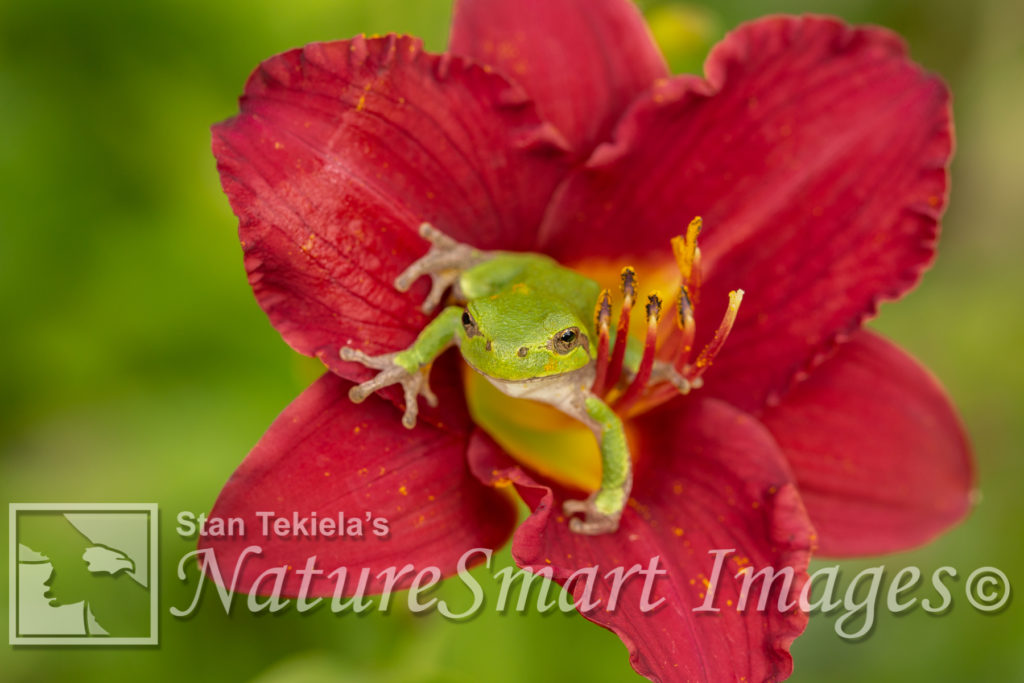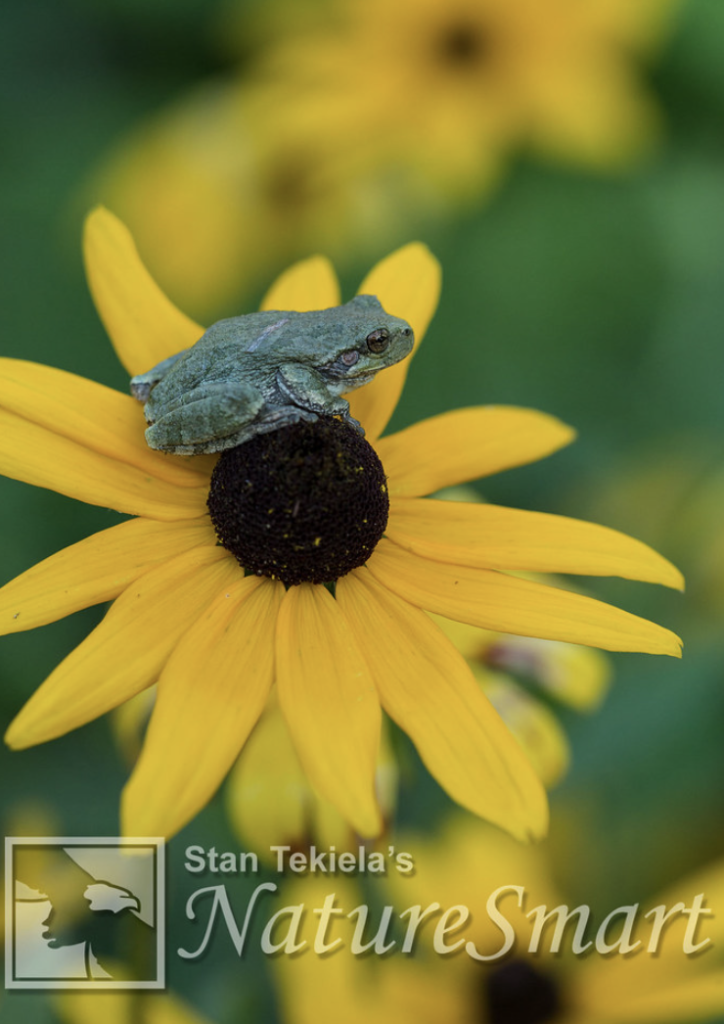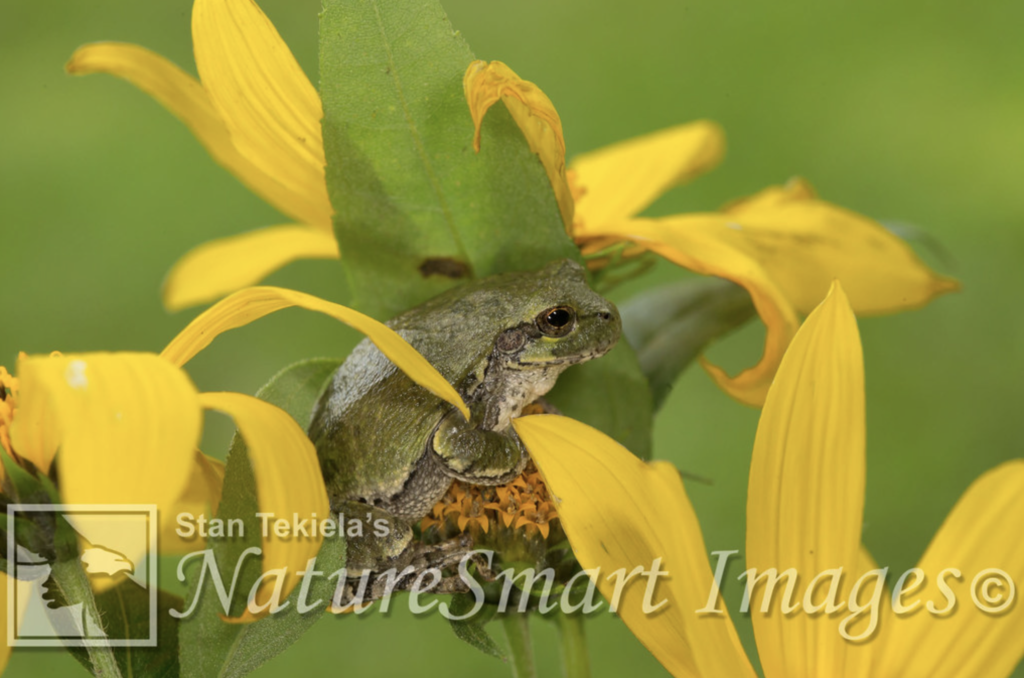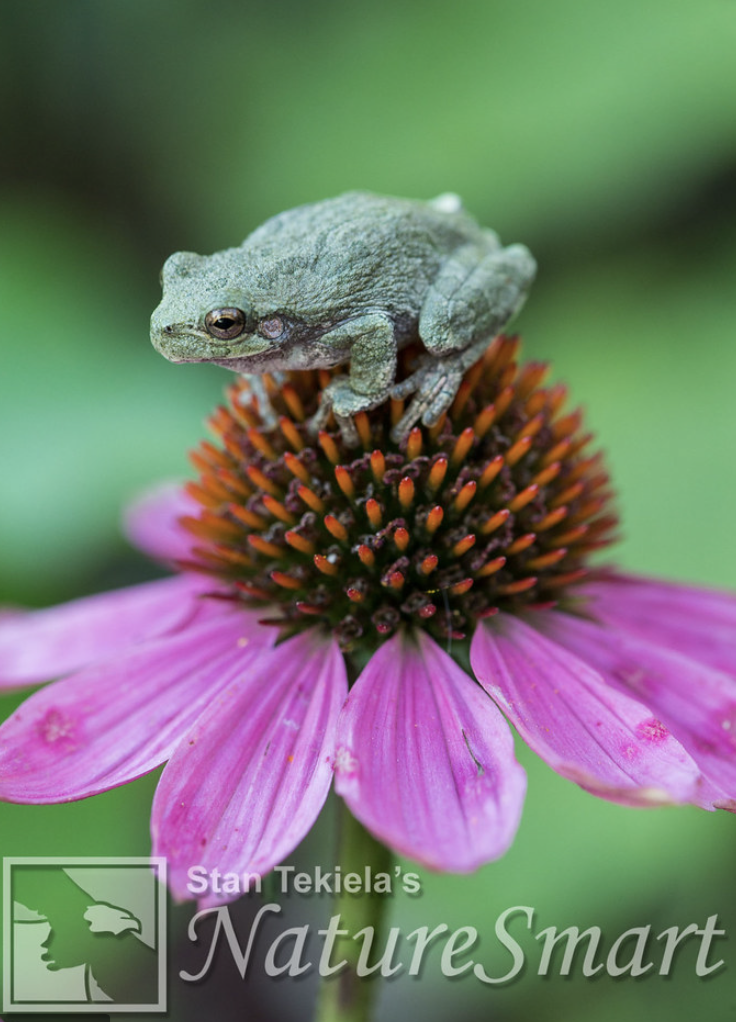
Gray Tree Frogs Are Masters of Disguise
Wildlife photographer and naturalist Stan Tekiela explains to us where Gray Tree Frogs get their name from, and how they are masters of disguise.

They are called “tree” frogs because they live in trees, unlike most other frogs who are pond, lake, and river dwellers. But its common name “gray” tree frog can be a bit confusing because most of the time when you see this little amphibian it is green in color, not gray.
Gray Tree Frogs can change their color depending upon the substrate where they are residing. If they are on a tree trunk, they are often gray in color; if they are on green leaves, they will be green. They don’t change color as fast as chameleons, but it happens fast enough to keep the little arboreal frogs safe and camouflaged.

In addition to turning green or gray, they also have dark mottling or black lines that help complete the camouflage package. Overall, they can range from nearly black to bright gray or nearly white. Interestingly, when one of these frogs dies, they turn gray.
Even with all the color changes, one thing stays the same. They have a yellow patch on the inside of their hind legs. Normally you don’t see this until they either hop or stretch out their hind leg, but then it is obvious.
Females tend to be larger than males and have a white throat. Males are smaller and have a darker throat patch. Tree frogs are smaller than most of our other frog species. They range from 1 to 2 inches in length.
We do have a second tree frog species in Eastern North America. It is the Cope’s Gray Tree Frog (Hyla chrysoscelis). These two frog species are identical in appearance. The main difference is in the number of chromosomes. So that is not much help when trying to figure out which species you have in your yard.
However, the two species have different calls. So, if you can hear the male call, you can tell the difference. The Cope’s Gray Tree Frog has a faster trill that lasts a shorter amount of time than that of the Gray Tree Frog. But the rates in which both frogs call are highly temperature dependent. At lower air temperatures the call slows down, making the frogs very difficult to distinguish by their calls. Breeding season is early to mid-summer where males actively call from the trees. They can be very loud when several males congregate together and call.

These frogs rarely leave wooded areas but can be found in gardens and around homes. They are attracted to insects, which are their main food source, in our gardens or beneath porch lights. Many people see these frogs stuck to windows as they are trying to catch insects.
They can climb right up a glass window with their amazingly sticky toe pads. No, they don’t have suction cups on their toes, but their tiny glands produce a sticky mucous that allows them to stick to just about any surface, including glass. In addition, their toe tips are more flexible than those of other frogs, which helps them grab onto tree branches or other thin objects and stick like glue.
To get from one place to another, Gray Tree Frogs take a leap and spread out their legs and toes and glide, much like Flying Squirrels. They stop by snagging any surface with their sticky toes.

Of course, one of the most amazing aspects of the Gray Tree Frog is its ability to overwinter. In fall they seek shelter on the ground under as much leaf litter as they can find. As the temperature drops below freezing, so does the frog. They remain frozen all winter and will thaw in spring and miraculously come back to life.
Look in your own garden to see one of these amazing amphibians.
If you enjoyed Stan’s post, you may consider one of his amazing nature books: Majestic Eagles, Wild Birds, or Backyard Birds: Welcomed Guests at our Gardens and Feeders. Young readers will delight in his award-winning children’s books, such as Whose Butt?, Critter Litter, and Jump, Little Wood Ducks.
You can follow Stan on Facebook and Twitter, or contact him via his web page. Stan’s nationally syndicated NatureSmart Column appears in more than 25 cities spanning 5 states (Minnesota, Wisconsin, Michigan, Illinois, and Pennsylvania) and is circulated to more than 750,000 readers.
For more stories about wildlife and nature, sign up for our newsletter now!
More posts from Stan:
Indigo Bunting—A Familiar Summer Visitor
The Nesting Behaviors of Sandhill Cranes
Big Birds, Baby Birds, Birds Everywhere
The Magical, Mystical World of Sandhill Cranes
For more stories about wildlife and nature, sign up for our newsletter now!



William McDaniel
What a pleasant surprise to find Stan Tekiela has a web site. I love his state bird books and have gifted them several time to friends and family in different states.
Liliane Opsomer
We are delighted that you enjoy his state bird books and thank you for gifting them to friends and family.